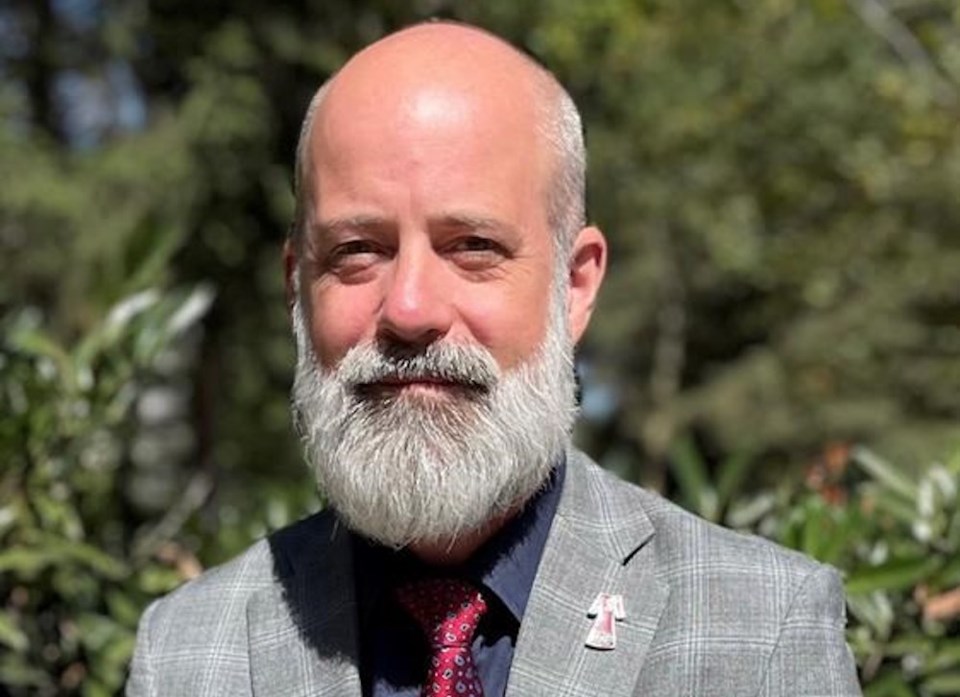Staff shortages, depleted resources, unaffordable housing and increased student needs exiting the COVID-19 pandemic are all factors leading to higher levels of mental health problems, according to BC Teachers’ Federation president Clint Johnston.
According to the 2022-2023 BCTF membership survey, 64 per cent of the 3,068 teacher respondents reported their workload is greater than it was a year ago and 65 per cent are reporting more stress.
“Teacher burnout and stress have significant impacts both personally and within the broader school community,” stated the survey, published by the union Tuesday.
As a result, teachers’ health is in decline: While 45 per cent of teachers report “good or very good physical health,” 40 per cent report that their physical health is worse now than it was last year, the survey showed.
The key contributors to this decline in workplace health is an increase in unfilled positions coupled by a lack of resources in classrooms.
“B.C. is experiencing major demographic shifts that are creating an increasing demand for teachers and critical personnel shortages. These shortages have a direct impact on students and teachers,” stated the survey, which indicated 82 per cent of teachers have been negatively impacted by staff shortages.
Compounding problems is greater needs from students as they exit the pandemic, Johnston told Glacier Media.
“Coming out of COVID there are lots of demands — social and academic — so it’s not a good time to have a shortage,” Johnston told Glacier Media.
The survey notes staff shortages particularly impact students with disabilities or diverse needs, as learning assistance staff are forced to act as teachers-on-call for sick teachers.
The problem is largely a result of older teachers retiring, with not enough new ones to replace them.
Johnston said teacher shortages are occurring across Canada and the United States; he said B.C. typically drew from a large pool of teachers in Ontario, a situation that has dried up in recent years.
Johnston said cost of living is a main factor for retention and recruitment challenges and when teachers, or prospective teachers, see how the workplace is deteriorating, they are even more inclined to exit the profession, he said.
The survey showed that “financial provisions” is the most common factor that will keep teachers teaching (of those surveyed who indicated they will likely be teaching in two years).
While Johnston said compensation has not been the biggest issue of late — following recent pay raises that largely keep up to inflation — he said there "remains a place" to increase compensation at the next round of contract negotiations, set for 2025.
“We need to make teaching a profession they want to pursue,” said Johnston.
“Teachers have side gigs now; they are living together as housing accommodations. We don’t think that’s viable when you want to draw people into a profession for 30 to 35 years,” said Johnston.
A new teacher in Metro Vancouver earns about $60,000 on a full-time contract. The average rental cost of a one-bedroom apartment in Metro Vancouver is about $2,300.
A veteran teacher with 10 years of service will earn roughly $100,000 by next school year (wages vary slightly by district and within regions).
The union said it did not have figures on the teacher shortage and the Ministry of Education did not respond by publication time.
Of the 45,000-plus BCTF members, 74 per cent have a full-time contract and 60 per cent have over 10 years of experience, while 15 per cent are in the first five years of their career.
The survey further showed 34 per cent of teachers are between ages 45 and 54 while 77 per cent are women (up from 62 per cent in 1992). Seven per cent of teachers report living with a disability or a disabled person, 17 per cent are non-white/racialized and three per cent are Indigenous.



